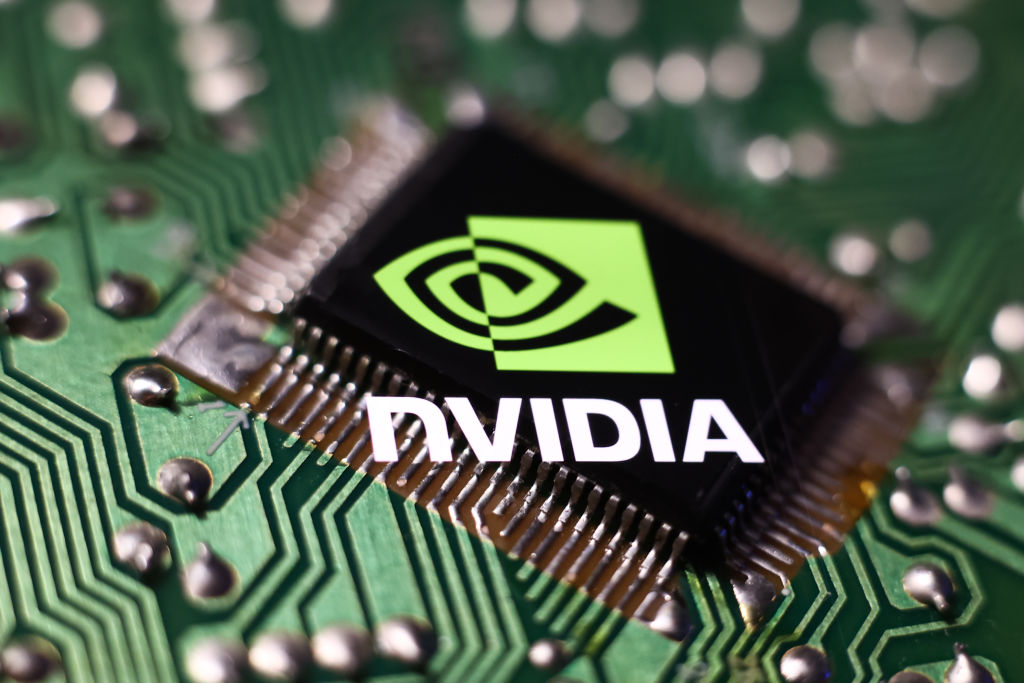
Nvidia (NVDA) has been posting blowout quarterly earnings reports for a year now, but its most recent print came with some ice cream and a cherry on top. Not only did the market's favorite pure-play bet on all things AI hike its dividend, NVDA split its stock.
Although returning more cash to shareholders and making NVDA stock more "accessible" are what Wall Street would call positive catalysts, they are not sufficient reasons in and of themselves to commit fresh capital to any name at any level.
That is not to say that you should not buy more Nvidia stock when it's trading at record highs. Rather, if you want to initiate or add to a position in Nvidia stock these days, the fact that it's effecting a stock split is immaterial.
First let's make clear that stock splits aren't nearly as important for retail investors as they were back in the days before folks could open a smartphone app and buy fractional shares for free. Nvidia is splitting its stock for pretty much the same reason Walmart split its stock, which was more for its own employees.
Secondly, let's stipulate that stock splits are like making change. In this case, shareholders received 10 shares for every one share held. This is essentially the same thing as breaking a $10 bill into 10 one-dollar bills. The fundamentals and technicals don't change – only the arithmetic does.
Which brings us to Nvidia's dividend hike. The forward yield on NVDA's dividend comes to about 0.03%. The stock's three-year average dividend yield is 0.06%, while the current yield on the S&P 500 stands at 1.36%. Given those facts, it's probably fair to assume that few folks buy Nvidia for the income.
Nvidia stock is everywhere
It's also worth mentioning that you probably already have healthy exposure to Nvidia stock.
Nearly 70% of actively managed mutual funds own Nvidia, according to the team at BofA Securities data analytics. And it's not like it's hard to own Nvidia on the passive side, either. As the world's third-most-valuable publicly traded company, Nvidia is in loads of indexes tracked by passive mutual funds and ETFs.
Take the main benchmark for U.S. equity performance. Thanks to a market cap of nearly $3 trillion, Nvidia's weight in the S&P 500, as represented by the SPDR S&P 500 ETF Trust (SPY), stands at about 6.6%.
That's actually quite a lot. Think about it like this: if the S&P 500 were, say, an actively managed large-cap balanced fund, the portfolio managers might have to cut their NVDA position by something like half?
Nvidia is also ably represented in the Nasdaq Composite and Nasdaq-100. As for the latter, Nvidia's weight in the growth index – most popularly tracked by the Invesco QQQ Trust (QQQ) – hovers around 8.1%
The bottom line is there's a universe of products offering exposure to the Magnificent 7 stock. No one is complaining about how hard it is to find a good ETF with Nvidia in it.
The Street loves Nvidia for lots of reasons
As we have noted, Nvidia has generated market-crushing returns for a long time. It's trading at record levels because no one knows how big this whole AI thing is going to get. They just know they don't want to miss out.
Will Nvidia keep beating the market?
Sure, probably, why not? But stocks never go up in a straight line. Markets are cyclical. Chipmakers are highly cyclical. The good news is that Nvidia is trading on some combination of incredible fundamentals and forecasts, and not just hype.
The bad news? Stocks go down, too. There's a bull case and a bear case for everything. Ever notice how share prices fluctuate all session long? Please remember that high-beta stocks such as Nvidia, which have a history of outperforming the broader market when it's going up, also tend to underperform the broader market when it's selling off.
On a brighter note, Wall Street makes a brawny bull case for Nvidia stock. Analysts, as a group, give NVDA an elite rating of Strong Buy (with high conviction), according to data from S&P Global Market Intelligence.
Instead of trying to summarize these analysts' investment theses in the space provided here, let's just say that of all the really good reasons to be bullish on Nvidia, the stock split isn't very high on the list.







